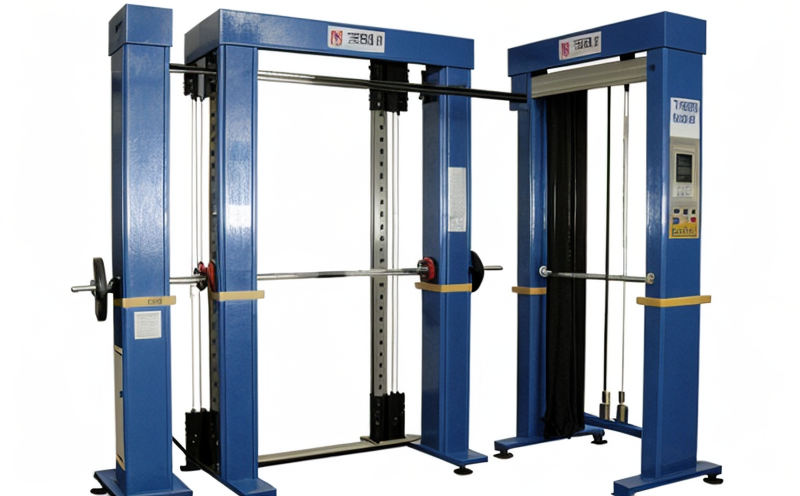Microscopic fabric weave pattern analysis
In the textile industry, understanding the microscopic structure of fabrics is crucial. We offer a specialized service that enables detailed examination and analysis of the weave patterns in fabrics using advanced optical microscopy techniques. This service is particularly important for quality managers, compliance officers, R&D engineers, and procurement teams who are responsible for ensuring the highest standards of fabric integrity.
Our microscopic fabric weave pattern analysis service utilizes high-resolution imaging to identify subtle variations in yarns, fibers, and weave structures that can significantly impact a fabric’s performance. This is especially critical when dealing with complex weaves or fabrics made from synthetic materials where traditional macroscopic inspection methods may miss important details.
The process begins with the preparation of the sample. Careful selection and cutting of specimens ensure accurate representation of the material being tested. Our skilled technicians use precision tools to prepare samples that are then mounted on slides for analysis under our advanced optical microscopes. The choice of magnification is crucial; we typically start at 10x and can go up to 2000x, depending on the weave pattern's complexity.
Once prepared, the samples undergo a series of observations and measurements using the microscope. This includes identifying the type of yarns used (cotton, polyester, etc.), their count, and how they interlace with each other. We also look at the presence of any imperfections such as knots or irregularities that could affect the fabric's strength and durability.
The data collected during this process is then compiled into a comprehensive report which includes images captured under various magnifications along with detailed descriptions of the observed patterns. These reports serve multiple purposes including aiding in quality control, guiding R&D efforts towards developing new materials or improving existing ones, ensuring compliance with industry standards, and supporting procurement decisions by providing insights into supplier capabilities.
Understanding these microscopic details is not just about aesthetics; it plays a vital role in determining the functional properties of textiles. For instance, knowing how tightly packed fibers are within a weave can give us insight into its resistance to stretching or tearing – key factors for applications ranging from clothing to industrial machinery covers.
This service goes beyond mere observation; it provides actionable intelligence that helps stakeholders make informed decisions regarding their product development lifecycle. By leveraging this level of detail, manufacturers and suppliers can optimize production processes, enhance product performance, and stay ahead in competitive markets.
Why It Matters
The importance of microscopic fabric weave pattern analysis cannot be overstated given its profound influence on the final quality and functionality of textiles. Here are some key reasons why this service matters:
Ensures high-quality products by catching minute flaws early in the manufacturing process.
Aids research & development teams in innovating better materials through detailed analysis of existing structures.
Supports compliance with international standards ensuring that all products meet specified requirements.
Facilitates efficient procurement practices by providing clear information about suppliers’ capabilities and reliability.
By incorporating this level of detail into their workflows, organizations can significantly improve the overall performance and longevity of their textile products while maintaining strict adherence to regulatory guidelines.
Applied Standards
| Standard | Description |
|---|---|
| ISO 105 | This standard provides methods for the evaluation of colour fastness to washing, rubbing, perspiration, light and chlorine dioxide. |
| ASTM D3786-19 | Method for Tensile Testing Textiles Using Constant Rate of Stretch Machinery with Automatic Stop at Specified Extension. |
| EN ISO 20645:2012(E) | Standardization of yarns and fabrics - Determination of the tensile strength and elongation at break of textile materials by means of electronic tensile testing machine. |
| IEC 61980-1 | Testing of electrical insulation materials - Particular test methods for determining mechanical properties - Tensile tests on samples of insulating material. |
The standards mentioned above guide the precise methodologies used in our microscopic fabric weave pattern analysis service. They ensure that every aspect from sample preparation to final reporting adheres strictly to accepted norms, thereby maintaining consistency and reliability across all analyses performed by us.
Customer Impact and Satisfaction
Enhanced product quality leading to increased customer satisfaction.
Improved innovation capabilities due to deeper insights into material properties.
A satisfied client base is a testament to the value we bring through our services. By providing thorough analysis backed by rigorous adherence to industry standards, we ensure that our clients are equipped with the knowledge needed to make informed decisions about their textile products.





